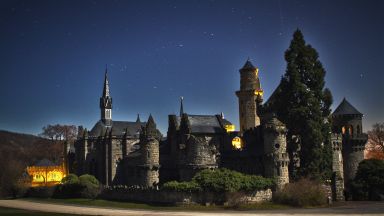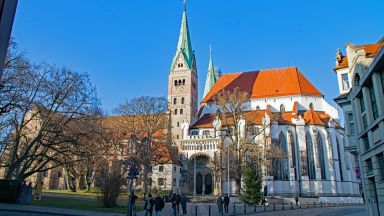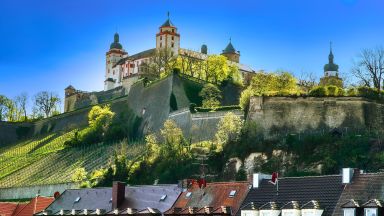Hanau: The Complete Guide
Hanau is a city in the state of Hesse, Germany. It is located about 25 kilometres southeast of Frankfurt and has a population of approximately 100,000 people. The city has a rich history that dates back to the 12th century. It was once the residence of the Counts of Hanau and was later ruled by the Electorate of Hesse. Hanau was also the birthplace of the famous Brothers Grimm, who collected and published many of the world’s most beloved fairy tales.
Today, Hanau is a modern and vibrant city that is known for its cultural heritage and historical landmarks. The city has a number of museums and galleries, including the Brothers Grimm Museum, the German Goldsmiths’ House, and the Hanau Art Museum. In addition to its cultural offerings, Hanau is also home to a number of beautiful parks and natural areas. One of the most popular parks is Wilhelmsbad, which features extensive gardens, fountains, and a picturesque lake.
Hanau is also a thriving economic centre, with a strong industrial and commercial sector. The city has a diverse economy that includes industries such as automotive engineering, electronics, and logistics. Overall, Hanau is a dynamic and diverse city that offers something for everyone. Whether you’re interested in history, culture, or nature, you’re sure to find plenty of things to see and do in this charming German city.
History of Hanau
Hanau has a rich and diverse history, spanning centuries and leaving its mark on the city’s appearance and way of life. The origins of Hanau can be traced back to 1143, when a castle was built on the banks of the Kinzig River. This fortified castle was expanded over time and eventually transformed into a grand palace, known as the Stadtschloss.
In the 19th century, Hanau-born Elector Wilhelm II. ordered the demolition of the oldest medieval part of the palace, despite its historical significance. Following the annexation of the Electorate of Hesse by Prussia in 1866, the palace was no longer needed as a residence for noble families, and was purchased by the city of Hanau in 1890. The various buildings were repurposed as homes and government offices, with one building serving as the mayor’s residence for a time.
In 1597, Calvinist refugees from the Spanish Netherlands and France founded the Neustadt, or “New City,” in Hanau. These refugees brought with them a wealth of capital and knowledge, and their settlement in the flourishing Neustadt attracted goldsmiths, weavers, and other craftsmen.
These events are just a few of the many that have shaped the fascinating history of Hanau, leaving an indelible imprint on the city that can still be seen and felt today.
In the early 17th century, the Dutch-Walloon double-church was erected in Hanau. Sadly, it was destroyed during WWII, leaving only the smaller Dutch section to be rebuilt. The ruins of the Walloon part were kept as a memorial.
During the Thirty Years’ War, Hanau served as the base for the Swedish Army led by General Ramsay. The city was besieged for nine months in 1635 by imperial troops under General Lamboy. The citizens suffered greatly, but the city was eventually liberated by Wilhelm V of Hesse Kassel, an ally of the Swedish king Gustav II Adolf. In remembrance of this event, Hanau holds an annual church service that has evolved into the Lamboyfest festival.
WWII inflicted massive destruction on Hanau, with only seven houses left standing in the city centre after a British air strike on March 19th, 1945. Sadly, American troops invaded only ten days later, and the war ended. A commemorative service is held annually at the main cemetery on March 19th in memory of those who lost their lives on that day.
After the war, the city underwent rapid reconstruction, with little regard for historical ruins or aesthetic appeal, as the need for living space was urgent. Consequently, only a few old buildings were restored in the 1950s and 60s.
Visiting Hanau for the first time and wondering what are the top places to see in the city? In this complete guide, I share the best things to do in Hanau on the first visit. Top help you plan your trip, I have also included an interactive map and practical tips for visiting!
This website uses affiliate links which earn a small commission at no additional cost to you.
9 Best places to See in Hanau
This complete guide to Hanau not only tells you about the very best sights and tourist attractions for first-time visitors to the city but also provide insights into a few of our personal favorite things to do.
This is a practical guide to visiting the best places to see in Hanau and is filled with tips and info that should answer all your questions!
Dutch-Walloon Church

Location: Wallonisch-Niederländische Kirche, Gärtnerstraße, Hanau, Hesse, Germany | Hours: 24 Hours | Price: Free | Distance: 1.00km
Visiting Dutch-Walloon Church
Brothers Grimm National Monument

Location: Brüder-Grimm-Denkmal, Am Markt, Hanau, Germany | Hours: 24 Hours | Price: Free | Distance: 1.10km
Visiting Brothers Grimm National Monument
Deutsches Goldschmiedehaus

Location: Deutsches Goldschmiedehaus, Altstädter Markt, Hanau, Germany | Hours: Tuesday to Sunday / Tuesday through Sunday 11:00 a.m. - 5:00 p.m. Closed on Mondays | Price: €2.50 for adults | Website | Distance: 1.40km
Visiting Deutsches Goldschmiedehaus
Schloss Steinheim

Location: Steinheim Castle, Hanau, Germany | Hours: Saturdays & Sundays: 11 A.M. TO 5 P.M | Price: Adults: €4.00, Children Free | Website | Distance: 2.20km
Visiting Schloss Steinheim
Schloss Philippsruhe

Location: Schlossterrasse - Schloss Philippsruhe, Philippsruher Allee, Hanau, Germany | Hours: 11am-6pm Tue-Sun | Price: adult/concession €4/3 | Website | Distance: 2.50km
Visiting Schloss Philippsruhe
Museum Grossauheim

Location: Museum Großauheim Pfortenwingert 4, 63457 Hanau | Hours: Saturdays & Sundays: 11 A.M. TO 5 P.M | Website | Distance: 2.80km
Visiting Museum Grossauheim
Hessisches Puppenmuseum

Location: Hessisches Puppen- & Spielzeugmuseum, Parkpromenade, Hanau, Germany | Hours: Tue/Wed/Thu 1:00 p.m. - 5:00 p.m Fri/Sat/Sun and public holidays 10:00 a.m. - 5:00 p.m | Price: Adults 3.50 euros Children and young people up to 18 years accompanied by families - Free | Distance: 4.10km
Visiting Hessisches Puppenmuseum
Wilhelmsbad, Hanau

Location: Staatspark Hanau-Wilhelmsbad Parkpromenade 7 63454 Hanau | Hours: Daily | Price: Free Entrance | Website | Distance: 4.20km
Visiting Wilhelmsbad, Hanau
Wildpark Alte Fasanerie Klein-Auheim

Location: Wildpark Alte Fasanerie, Fasaneriestraße, Klein-Auheim Hanau, Germany | Hours: Opening times March to October: 9am to 6pm (park clusure is one hour later), November to February: 9am to 5pm (park closure is at 5:30pm) | Price: Entrance fee: adults 7 €, pensioners 5 €, children 3.50 €, families (2 adults plus up to 4 children) 19 € | Distance: 4.70km
Visiting Wildpark Alte Fasanerie Klein-Auheim


